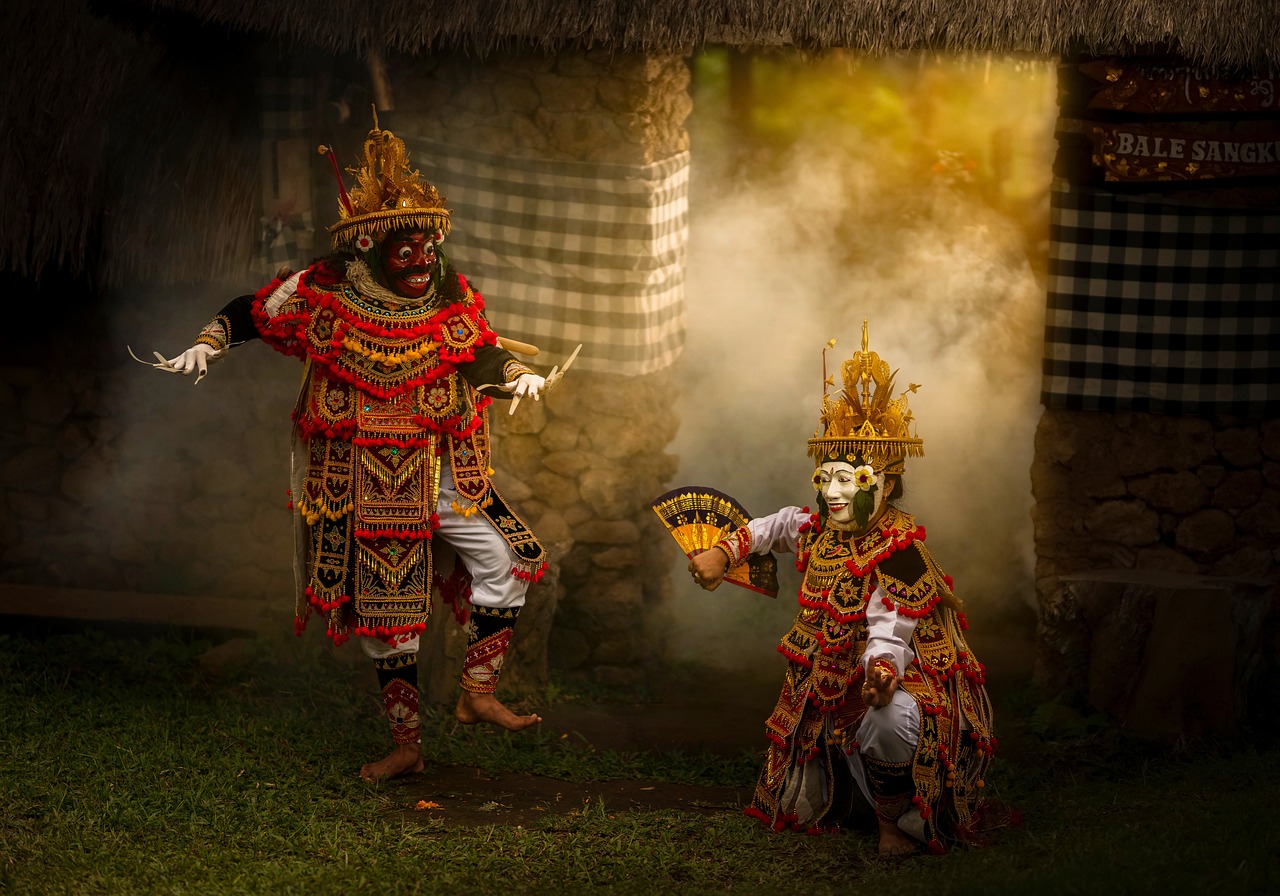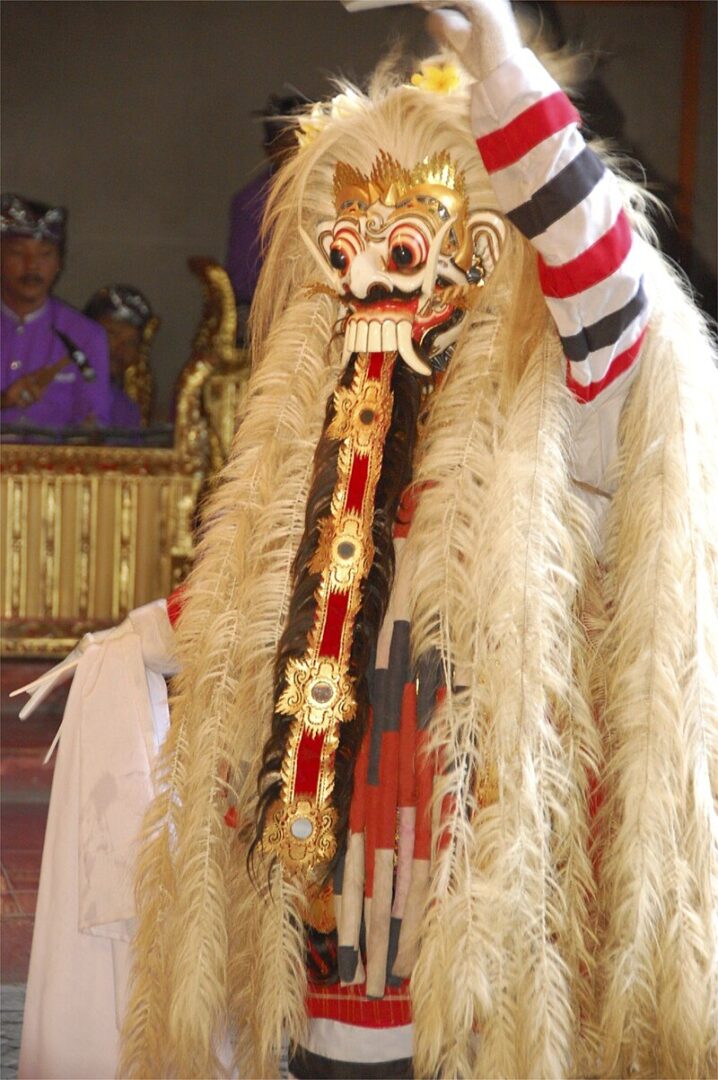The Barong Dance is a captivating Balinese traditional performance that embodies the eternal battle between good and evil. It is one of the marvels of Balinese culture and highly recommended if you are on a vacation.
This article provides an in-depth exploration of the Barong Dance, its cultural significance, characters, costumes, and where travelers can witness this vibrant and symbolic spectacle during their Bali visit.

Cultural Significance of the Barong Dance
This e is not just a random theatre piece performed to entertain. It is deeply rooted in Balinese Hinduism and mythology. It represents the constant battle between Rangda, the evil spirit, and Barong, the protective spirit and symbol of good.
The dance plays a significant role in various Balinese rituals and ceremonies, particularly during temple festivals and important life events. It is believed to provide protection and ward off malevolent forces.
Characters and Costumes
Lets take a look into the characters of this mythical piece, most f all the main parts of Barong and Rangda:
Barong: The Barong is an iconic figure in Balinese mythology, often seen as a lion-like creature representing the force of good. Dressed in an opulent costume of vibrant colors and detailed carvings, its appearance is further accentuated by an ornate headdress, capturing the essence of protection and benevolence.
Rangda: Rangda, the antithesis of Barong, symbolizes malevolence and disorder in Balinese folklore. With a visage designed to instill dread, she boasts long, threatening nails and a crown embellished with human skulls. Rangda’s appearance, from her makeup to her costume, is meticulously crafted to emanate an aura of menace, embodying the destructive forces in the universe.

Keris Dancers: These are the followers of Rangda, who often become entranced and attempt to stab themselves with their keris (a type of dagger), only to be protected and healed by Barong.
Celuluk: This character often appears as a comedic relief in the Barong play. Representing lesser evils or demonic minions, Celuluk is characterized by a grotesque appearance, yet it adds humor to the performance.
Panji Semirang: Often appearing in Balinese stories and plays, this character doesn’t directly relate to the Barong-Rangda battle but represents themes of love and transformation in Balinese theater.
Each character adds depth and dimension to the story, painting a vivid picture of the island’s rich cultural tapestry.
Performance Elements of the Barong Dance
The Barong is a performance that can be compared to the western play. It combines several artistic aspects for an amazing cultural balinese experience.
Choreography: It is a highly choreographed performance involving graceful movements, dynamic storytelling, and intricate rituals.
Music: A gamelan orchestra accompanies the dance, creating a mesmerizing soundscape that enhances the dramatic elements of the story.
Trance Dance: In some variations of the Barong Dance, performers may enter a trance-like state, channeling the spirits they represent. This adds an element of mysticism to the performance.
Narrative of the Barong Dance

It is a captivating representation of the eternal battle between good and evil in Balinese mythology. The dance unfolds with Barong, a lion-like creature symbolizing protection and goodness, defending the world against the malevolent Rangda, the embodiment of chaos and destruction. As the story progresses, Rangda’s black magic drives Barong’s followers to harm themselves with their keris (daggers). In response, Barong uses its protective powers to shield and heal them.
The dance culminates in a dramatic climax, neither Barong nor Rangda emerging as the victor, underscoring the Balinese belief in the balance and coexistence of good and evil forces in the universe.
Visiting Recommendations
If you visit Bali, you will find many opportunities to watch the show:
Ubud: Ubud is one of the best places to witness the Barong Dance in Bali. Several theaters and cultural centers in Ubud regularly host daily performances for tourists.
Temple Festivals: Check the local calendar for temple festivals and ceremonies, where you can experience authentic Barong Dances as part of religious rituals. This is our recommended way to watch!
Cultural Shows: Many hotels and resorts in Bali organize cultural shows that include the Barong Dance as part of their entertainment offerings.
Cultural Respect
When attending a performance, it’s essential to show respect for the cultural and religious significance of the event. Dress modestly and follow the guidance of local customs and traditions.
5 lesser-known and interesting facts about the Barong Dance:
- Dynamic Improvisation: While the Barong Dance follows a structured storyline, it also allows for improvisation by the performers. Dancers often adapt their movements to engage the audience and make each performance unique.
- Trance and Spiritual Channeling: In some traditional Barong Dance performances, dancers enter a trance-like state known as “ngelawang.” They believe they become vessels for the spirits they represent, adding an element of mysticism to the dance.
- Unique Costumes: The Barong costume is one of the most elaborate and colorful in Balinese dance. It features intricate carvings, vibrant colors, and a towering headdress. The Rangda costume, on the other hand, is designed to evoke fear with its menacing appearance.
- Sacred Implements: During the performance, the Barong is often equipped with sacred items like a kris (dagger) and a keris (sword). These implements are considered to possess protective and magical powers.
- Role of the Monkey: In some variations, a character representing a monkey is featured. This character is often comic relief and engages in playful interactions with the audience, bringing humor to the performance.
Conclusion
The Barong Dance is a captivating representation of Bali’s spiritual and artistic traditions. Witnessing this performance not only provides insight into the island’s culture but also offers a memorable and visually stunning experience for travelers seeking to immerse themselves in Balinese heritage.
FAQ about the Barong Dance
What is Barong Dance?
The Barong Dance is a traditional Balinese performance that depicts the eternal battle between good (Barong) and evil (Rangda). It is a vibrant and symbolic dance that combines storytelling, intricate costumes, and music to showcase Balinese culture and spirituality.
What is the cultural Significance of the Barong Dance?
It holds deep cultural and spiritual significance in Bali. It represents the ongoing struggle between positive and negative forces in the Balinese Hindu belief system. The dance is often performed during temple festivals and ceremonies to provide protection and ward off malevolent spirits.
Who are the Main Characters in the Barong Dance?
The central characters in the Barong Dance are Barong, representing good and protection, and Rangda, symbolizing evil and chaos. Barong appears as a lion-like creature, while Rangda is depicted with a menacing face, long nails, and a crown of human skulls.
What Elements Are Involved in the Performance?
The Barong Dance includes elements like choreography, music played by a gamelan orchestra, and often, dancers entering a trance-like state. The performance unfolds through a series of episodes, each portraying different encounters and conflicts between the characters.
Where Can Travelers Witness the Barong Dance in Bali?
Travelers can experience the Barong Dance at various cultural centers, theaters, and temple festivals in Bali. Ubud is particularly known for hosting regular Barong Dance performances, and many hotels and resorts also organize cultural shows that include this traditional dance.
